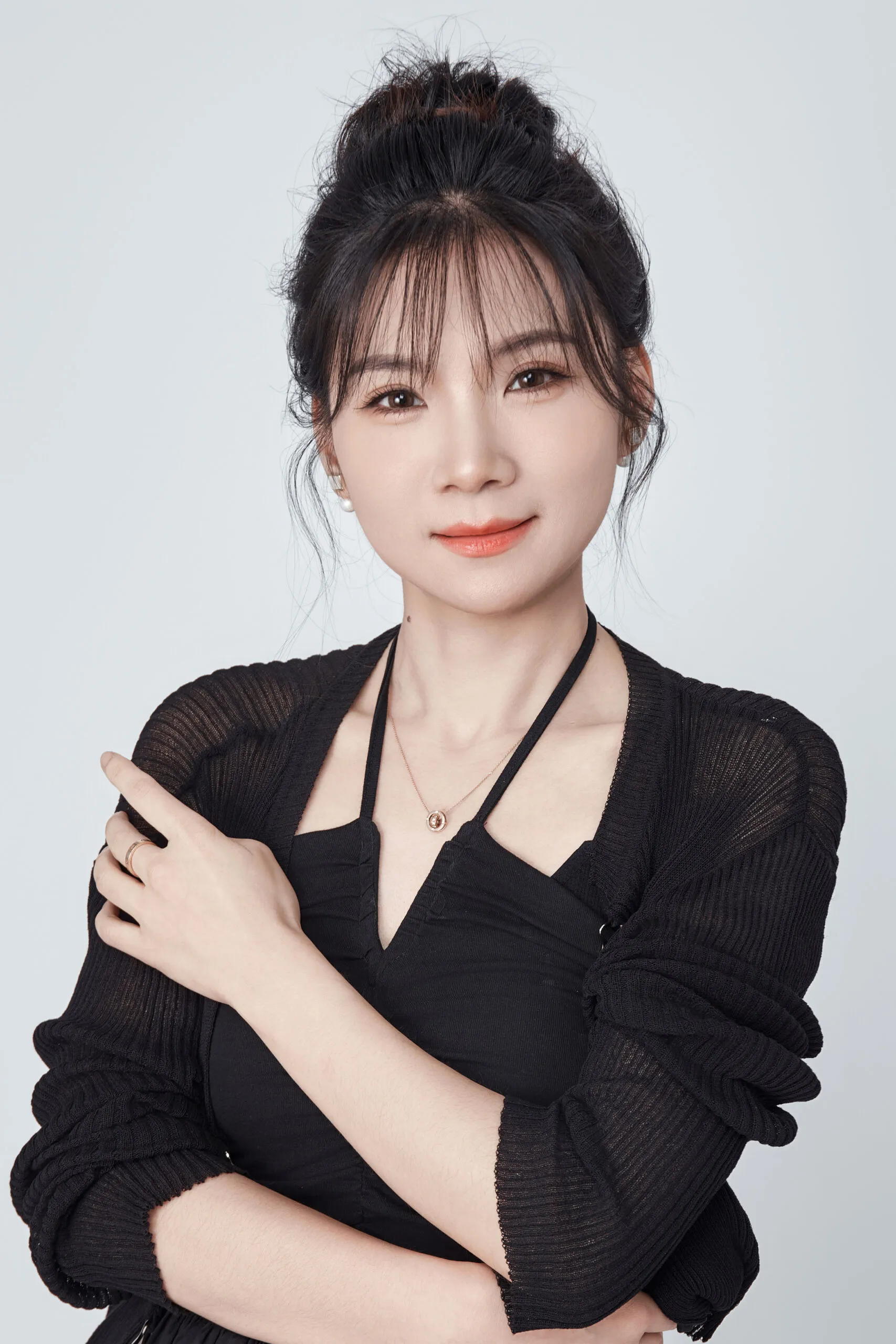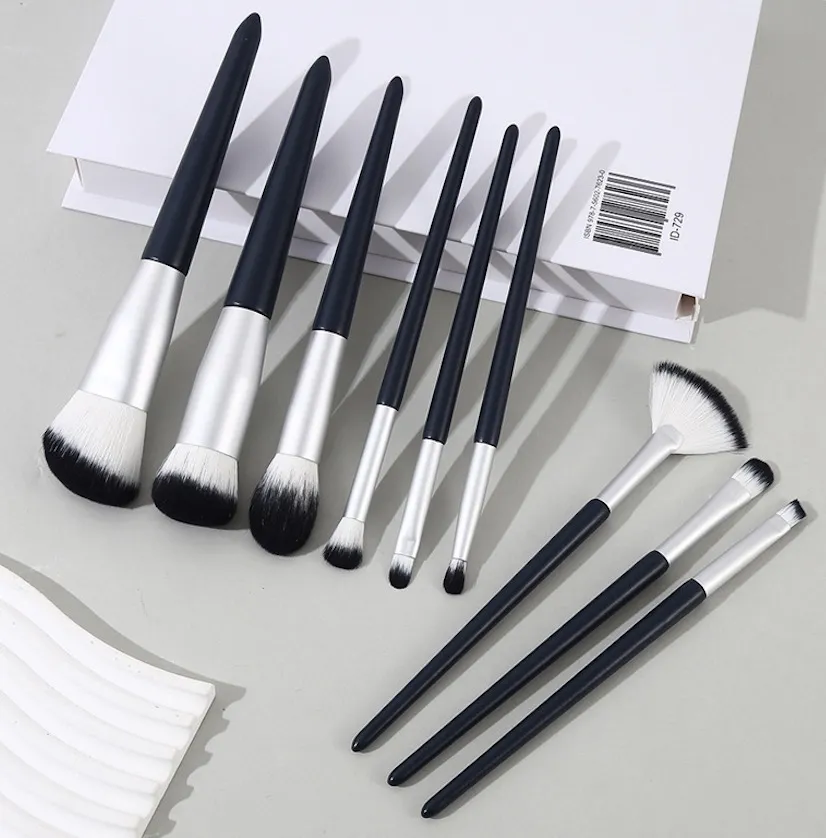Confusing labels make sourcing Ethical brushes1 a headache. Choosing the wrong supplier can damage your brand’s reputation and mislead customers. I’ll break down what these terms really mean.
Cruelty-free makeup brushes2 are made without animal testing. Vegan brushes use no animal hair or materials. Ethical brushes combine both with transparent sourcing and sustainability. For reliable choices, pick synthetic bristles (Taklon/PBT), verify certifications like Leaping Bunny, and avoid "natural hair" due to welfare risks.
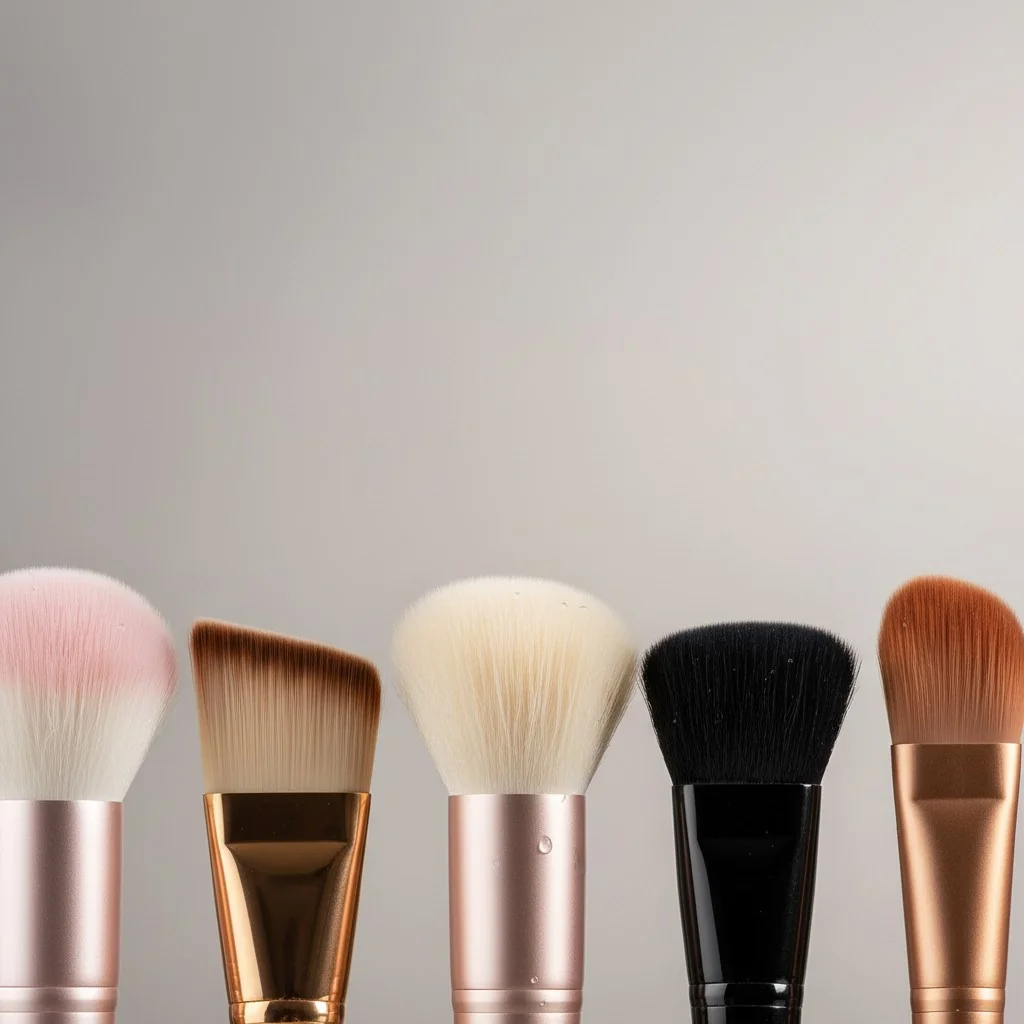
These terms get thrown around a lot in the beauty industry, but they are not interchangeable. As a brand founder, you need to know the difference. It protects your brand, builds trust with your customers, and ensures your products reflect your values. I’ve spent years on the factory floor and working with global suppliers. I’ve seen the confusion these labels can cause for brands. Let’s clear things up so you can source your brushes with total confidence.
All 'cruelty-free' makeup brushes are also vegan.False
Cruelty-free refers only to animal testing policies. A brush can be made with animal hair (like goat or squirrel) and still be labeled 'cruelty-free' if the final product or its ingredients were not tested on animals.
Synthetic brushes can outperform natural hair for cream and liquid products.True
Synthetic bristles are non-porous, so they don't absorb wet products like animal hair does. This leads to less product waste and a smoother, more even application.
Cruelty-free vs. vegan vs. ethical: what does each label really cover?
Your customers demand ethical products, but the labels are a minefield. Misinterpreting them can lead to sourcing mistakes and customer backlash. Let’s clarify each term for your brand.
Cruelty-free means no animal testing. Vegan means no animal-derived ingredients. Ethical is the whole package: cruelty-free, vegan, plus fair labor and sustainable practices. They are not the same, and you need to understand all three for a truly responsible product line.
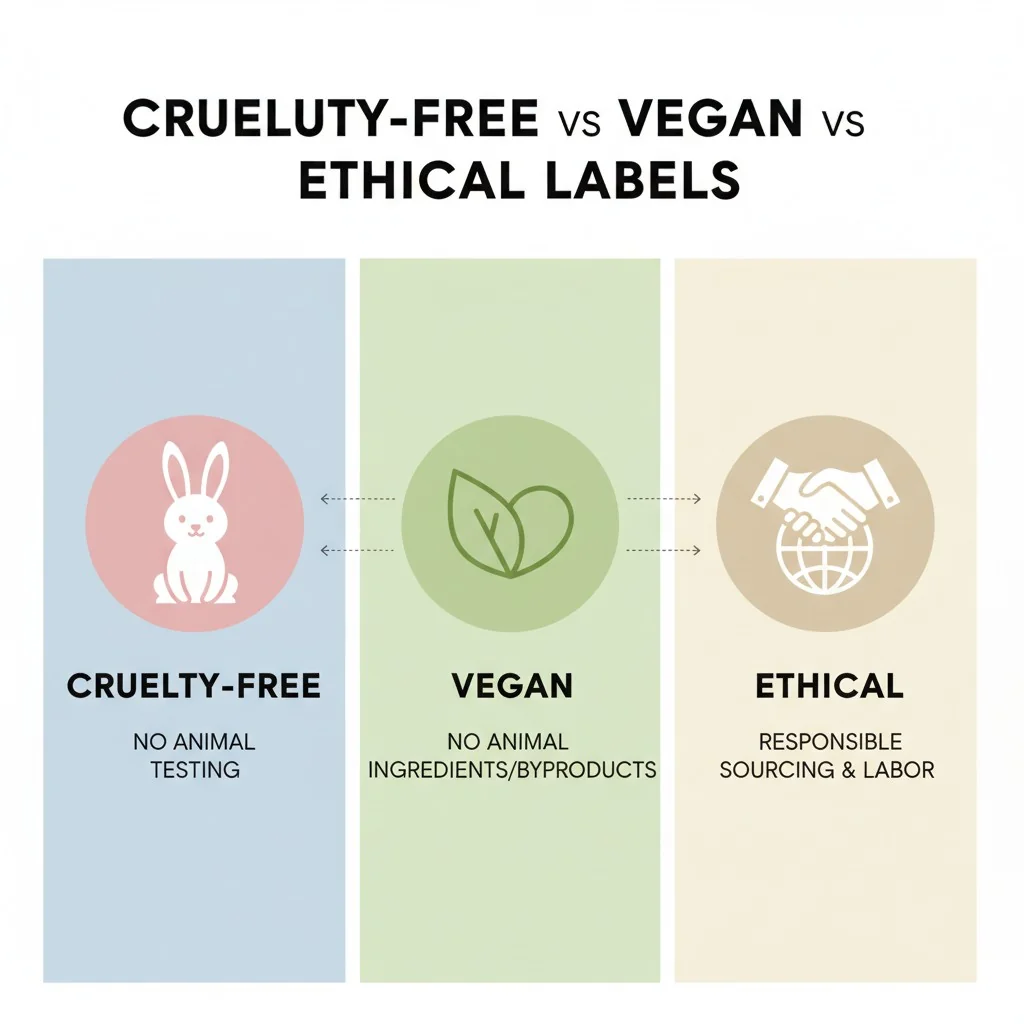
When I first started in a brush factory, these terms were rarely used. Now, they are essential for any brand that wants to connect with modern consumers. But I see so many founders get tripped up by the details. A brush can be "cruelty-free" but made with goat hair from a questionable supply chain. It can be "vegan" but made in a factory with poor labor standards. "Ethical" is the goal, but it requires you to look at the complete picture.
Understanding the Core Differences
The key is to not use these terms interchangeably. Each one addresses a different part of the production process.
- Cruelty-Free: This is strictly about animal testing. It means that neither the final brush nor its individual components (like glue or handle coatings) were tested on animals.
- Vegan: This is strictly about materials. It means the brush contains zero animal-derived ingredients. This includes the bristles (no squirrel, goat, mink hair) and other components like glue, which historically could be animal-based.
- Ethical: This is a broad, holistic term. An ethical brush is both cruelty-free and vegan. It also considers human rights (fair labor, safe working conditions) and environmental impact (sustainable materials3, responsible disposal).
| Term | Primary Focus | What It Covers | What It Doesn’t Cover |
|---|---|---|---|
| Cruelty-Free | Animal Testing | No testing on animals at any stage. | The origin of materials (can use animal hair). |
| Vegan | Ingredients/Materials | No animal-derived components (hair, glue). | Animal testing policies or labor standards. |
| Ethical | The Whole Picture | animal welfare4, labor, sustainability. | This is not a regulated term; standards vary. |
A makeup brush can use goat hair and still be labeled 'cruelty-free'.True
The 'cruelty-free' label only addresses animal testing. The sourcing of animal hair falls under material or 'vegan' considerations, which are separate issues.
The term 'ethical' is a regulated certification.False
'Ethical' is a broad marketing term, not a formal certification. Its meaning depends on the brand's own standards for animal welfare, labor, and sustainability, which should be transparently communicated.
Materials decoded: are Taklon, PBT, and nylon better than animal hair?
You’ve heard synthetic brushes are the ethical choice, but you’re worried about performance. Sticking with "natural" hair could mean you’re using inferior, hard-to-verify materials. I’ll show you why modern synthetics are the superior choice.
Yes, modern synthetics like Taklon and PBT outperform animal hair. They are non-porous, making them ideal for creams and liquids, easier to clean, and more durable. They also shed less and are hypoallergenic, offering a better user experience for your customers.
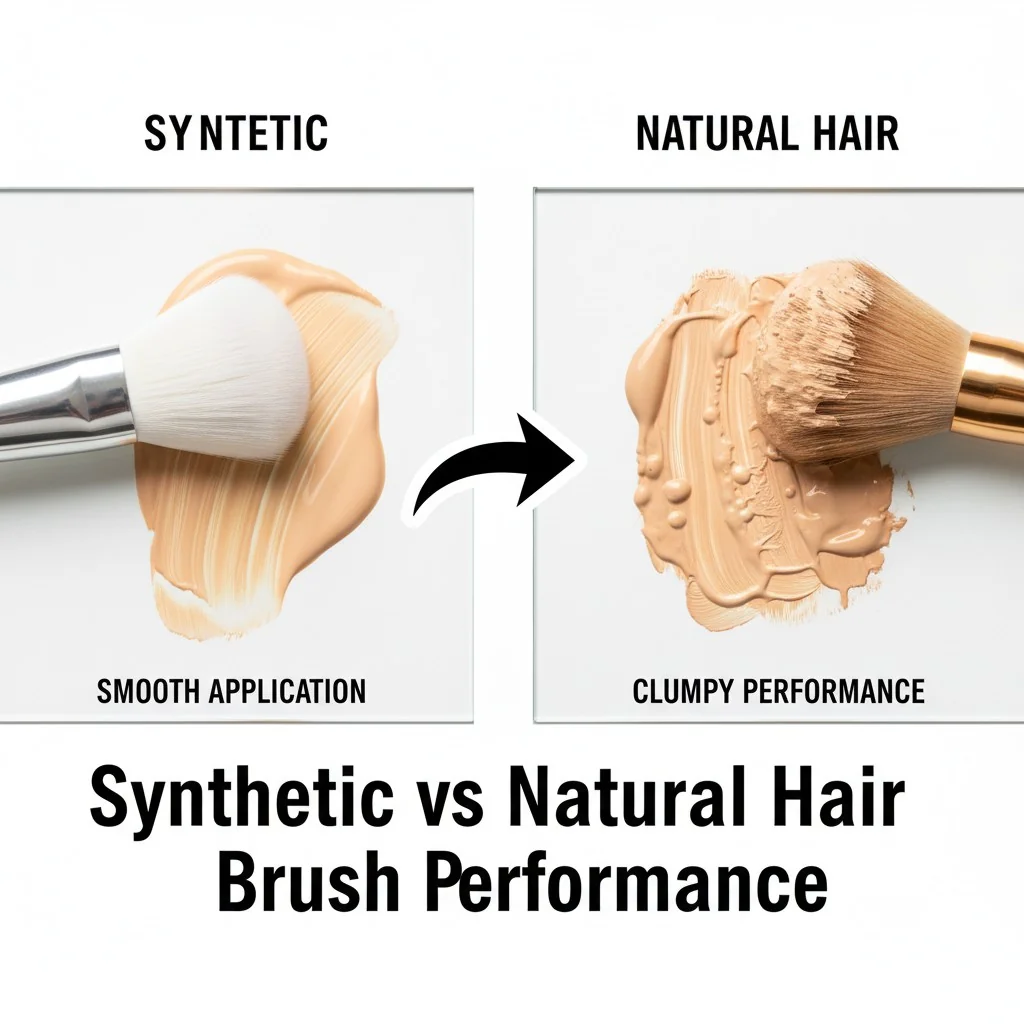
The belief that "natural is always better" is one of the biggest myths in the brush industry. Years ago, it might have been true. But fiber technology has advanced so much. Today’s synthetic bristles5 are engineered for cosmetic application. They can be shaped, tapered, and textured to mimic the best qualities of animal hair without any of the ethical or performance downsides. I’ve helped hundreds of brands switch from animal hair to synthetics, and their feedback is always overwhelmingly positive. The performance is just better.
The Performance Edge of Modern Synthetics
Animal hair is porous, like our own hair. It absorbs oils and liquids, which means it wastes product and is harder to clean, creating a breeding ground for bacteria. Synthetic fibers like Taklon and PBT (Polybutylene Terephthalate) are solid filaments.
- Superior for All Formulas: They don’t absorb creams or liquids, leading to a flawless application with less product waste. Modern synthetics are also crimped and textured to pick up and blend powders perfectly.
- More Hygienic and Durable: Being non-porous makes them incredibly easy to wash and quick to dry. They are also more resilient to makeup and cleansers, so they shed less and keep their shape longer.
- Hypoallergenic: Unlike animal hair, which can trigger allergies for some users, synthetic fibers are a safe bet for all skin types.
A Note on Sustainability
A valid concern for brand owners is that synthetic fibers are a form of plastic. However, a truly sustainable product is one that lasts. Because high-quality synthetic brushes are so durable and shed less, they don’t need to be replaced as often. This reduces overall waste. At Brushino, we also focus on using recycled aluminum for ferrules and FSC-certified wood or bamboo for handles to create a more responsible product lifecycle.
| Feature | Synthetic Fibers (Taklon/PBT) | Animal Hair (Goat/Sable) |
|---|---|---|
| Best For | Liquids, Creams, Powders | Primarily Powders |
| Hygiene | Easy to clean, non-porous | Harder to clean, porous |
| Durability | High, sheds less | Lower, prone to shedding/damage |
| Allergies | Hypoallergenic | Can cause allergic reactions |
| Sourcing | Consistent, verifiable | Opaque, tied to fur industry |
Synthetic makeup brushes shed less than natural hair brushes.True
Synthetic fibers are smoother and can be more securely anchored into the ferrule during manufacturing. Animal hair is naturally more brittle and prone to breaking and shedding over time.
Natural hair brushes are always better for applying powder makeup.False
This is a common myth. Modern synthetic fibers are engineered with textures, waves, and tapered tips that pick up and distribute powder just as effectively as, if not better than, animal hair.
Certifications that matter: what’s the difference between Leaping Bunny and PETA for brushes?
You need certifications to prove your claims, but which ones do customers trust? Choosing a weaker certification or misinterpreting a logo can undermine your brand’s credibility. Let’s compare the two biggest names.
Leaping Bunny is the gold standard for cruelty-free, requiring supplier monitoring and independent audits. PETA’s list is broader and relies on self-reporting. For material assurance, look for PETA’s separate "Vegan" certification, as their "cruelty-free" label doesn’t cover materials.
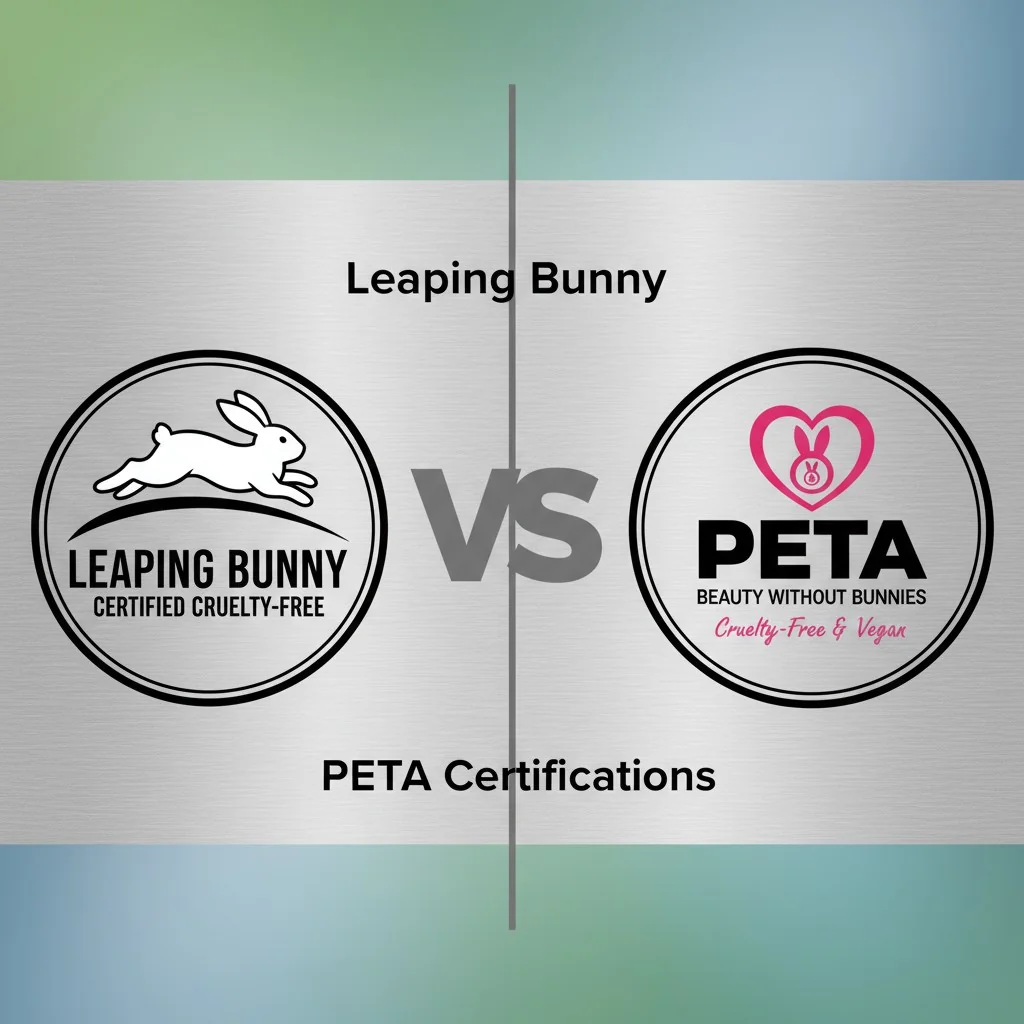
This is a question I get from almost every brand founder I work with. You want a logo on your packaging that your customers recognize and trust. Both Leaping Bunny and PETA have done great work in raising awareness, but their verification processes are very different. For a brand that is serious about transparency, understanding this difference is critical. It’s about choosing the certification that best reflects your commitment to being truly cruelty-free.
Leaping Bunny: The Gold Standard for Audits
The Leaping Bunny Program is widely considered the most rigorous certification. Here’s why:
- Supplier Monitoring System: Brands must get declarations from their suppliers and manufacturers confirming they don’t test on animals.
- Independent Audits: Leaping Bunny requires brands to be open to independent audits to verify their claims and supply chain.
- Annual Recommitment: Brands must recommit to the standards every year.
- No Animal Testing for Foreign Markets: This is a key point. Brands certified by Leaping Bunny cannot test on animals anywhere in the world, even if required by law in certain countries.
PETA: Broad Recognition with Nuances
PETA’s "Beauty Without Bunnies" program has massive public recognition. It’s a great starting point, but you need to know the details.
- Statement of Assurance: Certification is typically based on a company’s self-reported statement that they and their suppliers do not conduct or commission animal tests.
- No Ongoing Audits: Unlike Leaping Bunny, PETA does not typically conduct independent audits to verify these claims.
- Separate Vegan Certification: PETA’s standard cruelty-free logo does not mean a product is vegan. You must look for the separate "PETA-Approved Vegan" logo to ensure the brushes are not made with animal hair or other animal-derived ingredients.
| Certification | Verification Method | Covers Foreign Market Testing? | Vegan Assurance |
|---|---|---|---|
| Leaping Bunny | Supplier monitoring & audits | Yes, strictly forbidden. | No, it’s a cruelty-free cert only. |
| PETA Cruelty-Free | Self-reported statements | Policy can be less strict. | No, only covers testing. |
| PETA Vegan | Self-reported statements | N/A (focus is on materials) | Yes, guarantees no animal ingredients. |
Leaping Bunny certification requires brands to be open to independent audits.True
This is a key differentiator and why it's considered the most rigorous cruelty-free certification. It provides a layer of third-party accountability that self-reporting programs lack.
PETA's 'Beauty Without Bunnies' certification guarantees a product is vegan.False
This certification only covers animal testing. A separate 'PETA-Approved Vegan' logo is needed to certify that no animal-derived ingredients are used in the product.
What’s on the OEM buyer’s checklist for ethical brush sourcing?
You’re ready to source ethical brushes, but you don’t know what to ask suppliers. Without a clear checklist, you risk getting low-quality products with unverified claims. Here is the exact checklist I use.
Your checklist must cover five areas: animal welfare (synthetics only), certifications (Leaping Bunny/PETA Vegan standards), material specs (fiber type, performance), sustainability (recycled materials), and traceability (supplier mapping). This ensures your brushes align with your brand values from start to finish.
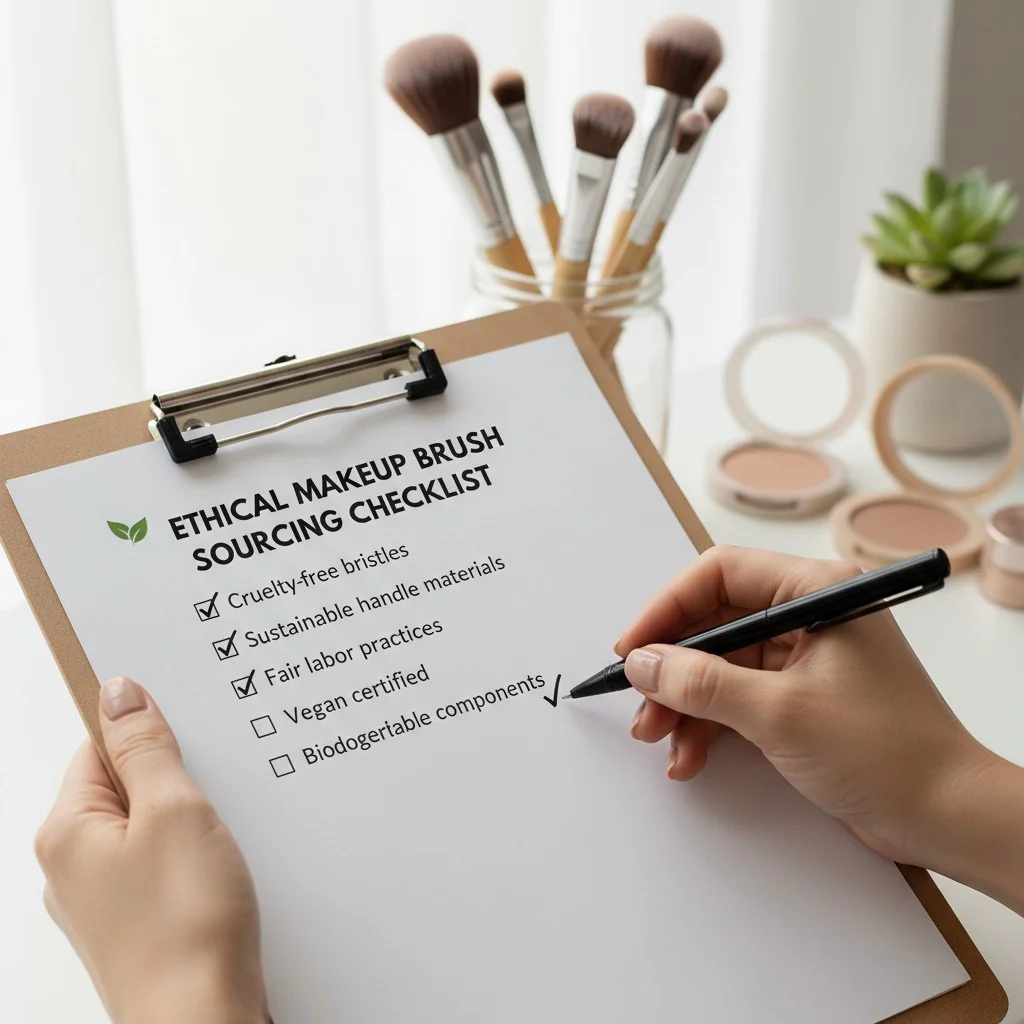
When clients like you come to me to create a brush line, this is where we turn ideas into a real product. A good manufacturer shouldn’t just take your order; they should be a partner who can guide you through these details. Having a checklist empowers you to lead the conversation and ensures that nothing is overlooked. It’s your tool for holding your suppliers accountable and guaranteeing the final product is something you can be proud of.
The 5-Point Sourcing Checklist
Use this as a guide when you talk to potential factories. A reliable partner will have clear answers and documentation for each point.
- Animal Welfare: The policy should be simple: no animal-derived materials. Confirm they only use synthetic fibers and that their glues are not animal-based. Ask for a written declaration.
- Certifications: Ask what third-party certifications the factory holds (ISO, FSC). Inquire if they are able to produce brushes that comply with Leaping Bunny or PETA Vegan standards and if they can provide the necessary documentation for your own certification process.
- Material Specs & Performance: Don’t just ask for "synthetic hair." Ask for the specific fiber type (e.g., PBT), denier, and tip style. Request samples to conduct your own performance trials with your formulas.
- Sustainability: Go beyond the bristles. Ask about handles (FSC-certified wood/bamboo, recycled plastic), ferrules (recyclable aluminum), and low-VOC adhesives. Do they offer sustainable packaging options?
- Traceability & Transparency: Can the factory trace the synthetic fibers back to the extruder? Will they provide a Certificate of Conformance (CoC) with each batch? A transparent partner will be able to document their supply chain.
| Checklist Area | Key Question for Suppliers | What to Look For |
|---|---|---|
| Animal Welfare | "Can you provide a declaration that all materials, including glue, are 100% vegan?" | A signed, formal document. |
| Certifications | "Can you provide documentation to support our Leaping Bunny application?" | Willingness and experience with the process. |
| Material Specs | "What is the exact PBT fiber grade you use for a powder brush vs. a foundation brush?" | Specific technical data, not vague answers. |
| Sustainability | "What recycled or FSC-certified components do you offer for handles and ferrules?" | A catalog of sustainable options. |
| Traceability | "Can you provide supply chain documentation for all components?" | Batch records, CoCs, supplier audits. |
FSC-certified bamboo is a sustainable option for makeup brush handles.True
The Forest Stewardship Council (FSC) ensures that the bamboo is sourced from responsibly managed forests that provide environmental, social, and economic benefits, making it a great choice for eco-conscious brands.
A supplier's verbal 'cruelty-free' promise is enough to protect my brand.False
For true brand protection and to earn customer trust, you need proof. Always ask for written supplier declarations, third-party certifications, and traceability documents to verify all ethical claims.
Conclusion
Sourcing ethical brushes is about clarity and asking the right questions. Now you have the knowledge to build a brush line that is beautiful, high-performing, and truly responsible.
References
-
Understand the criteria that make brushes ethical and how they align with consumer values. ↩
-
Explore the advantages of cruelty-free makeup brushes and how they impact animal welfare. ↩
-
Explore the types of sustainable materials that can be used in makeup brushes for eco-friendly options. ↩
-
Understand the importance of animal welfare in the production of makeup brushes and its impact on the industry. ↩
-
Discover why synthetic bristles are often considered superior to natural hair in makeup application. ↩

